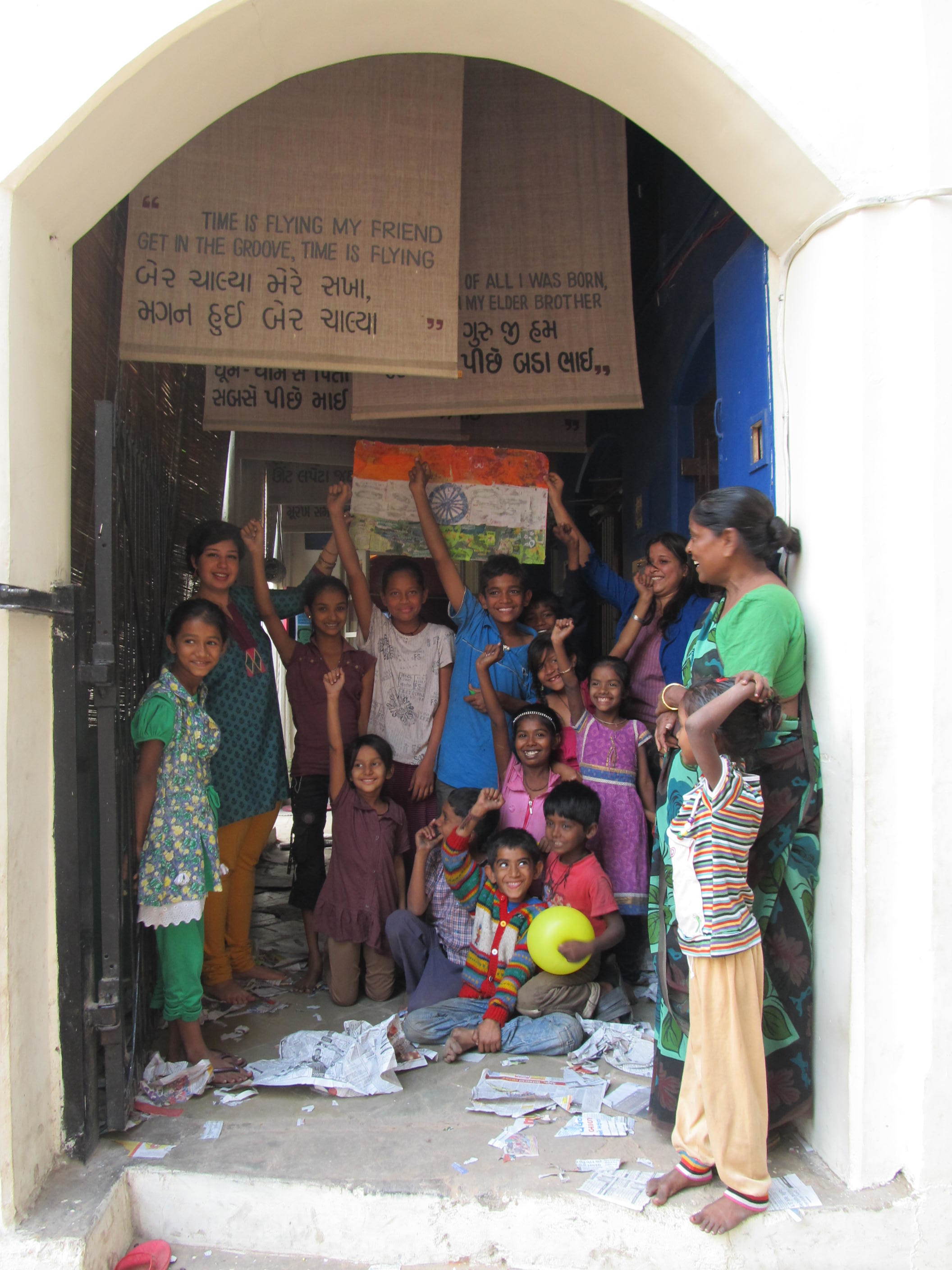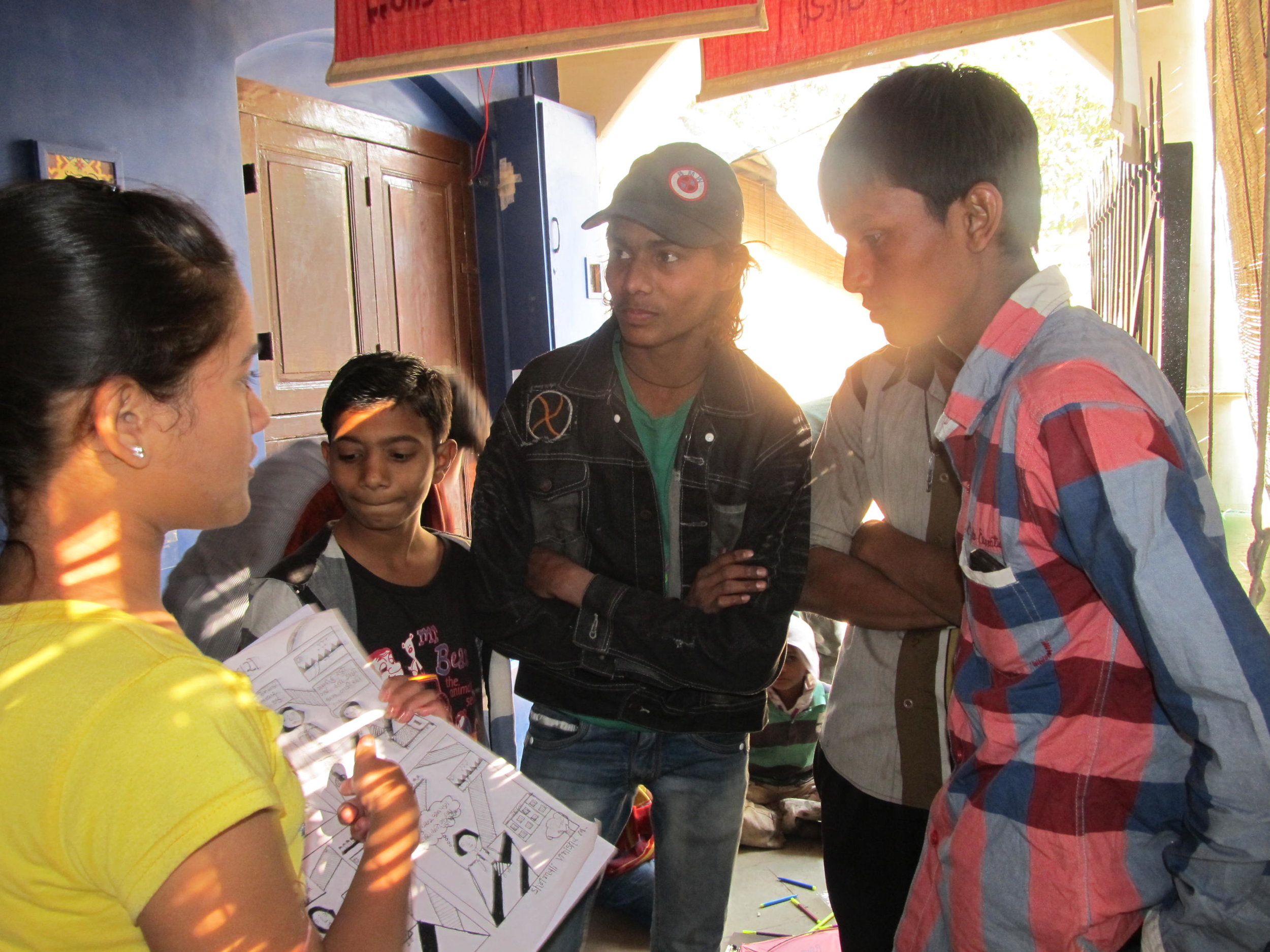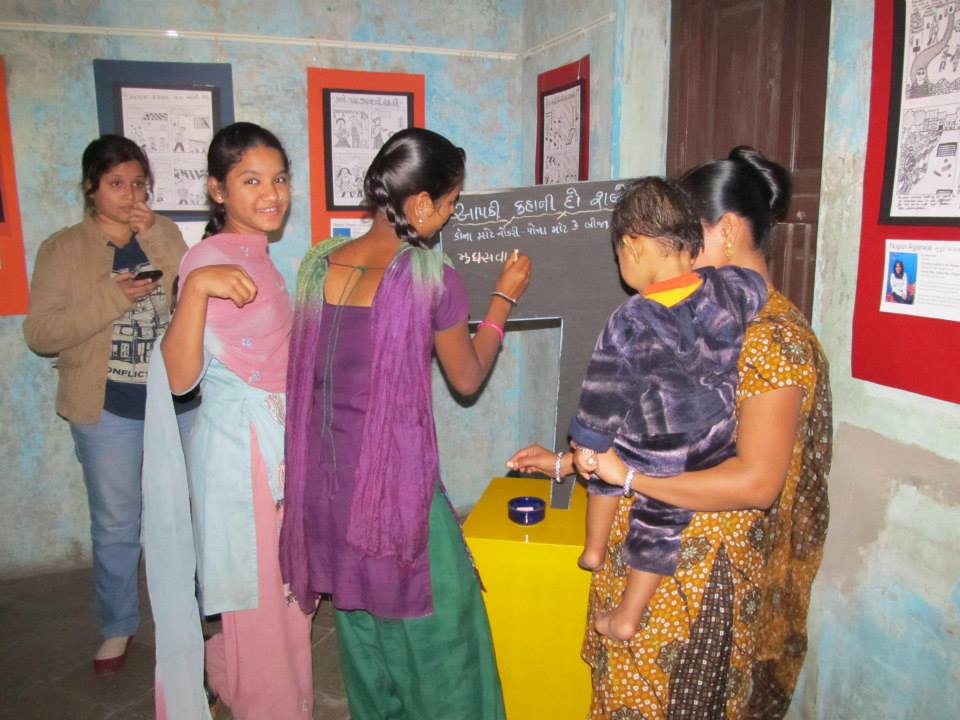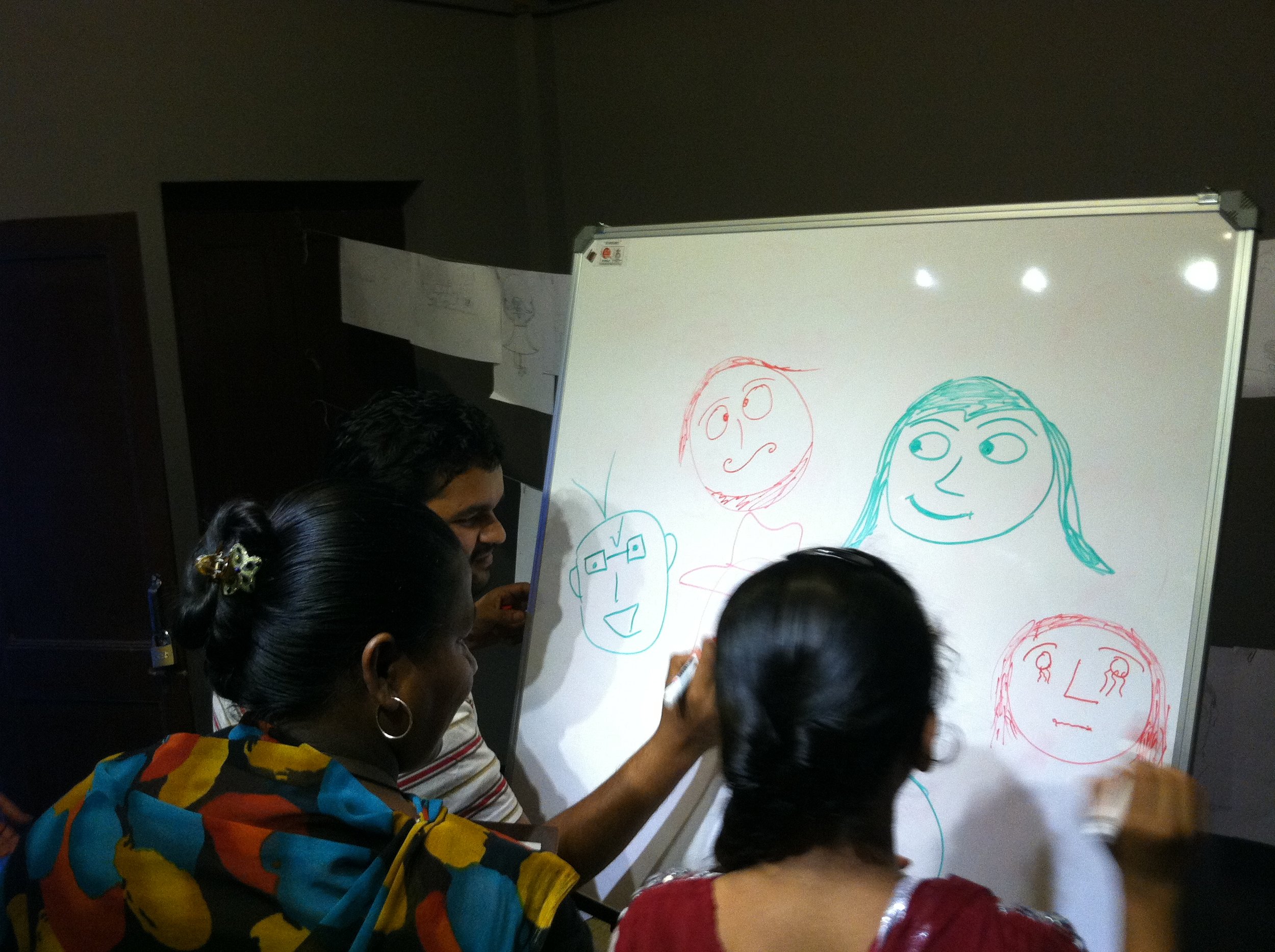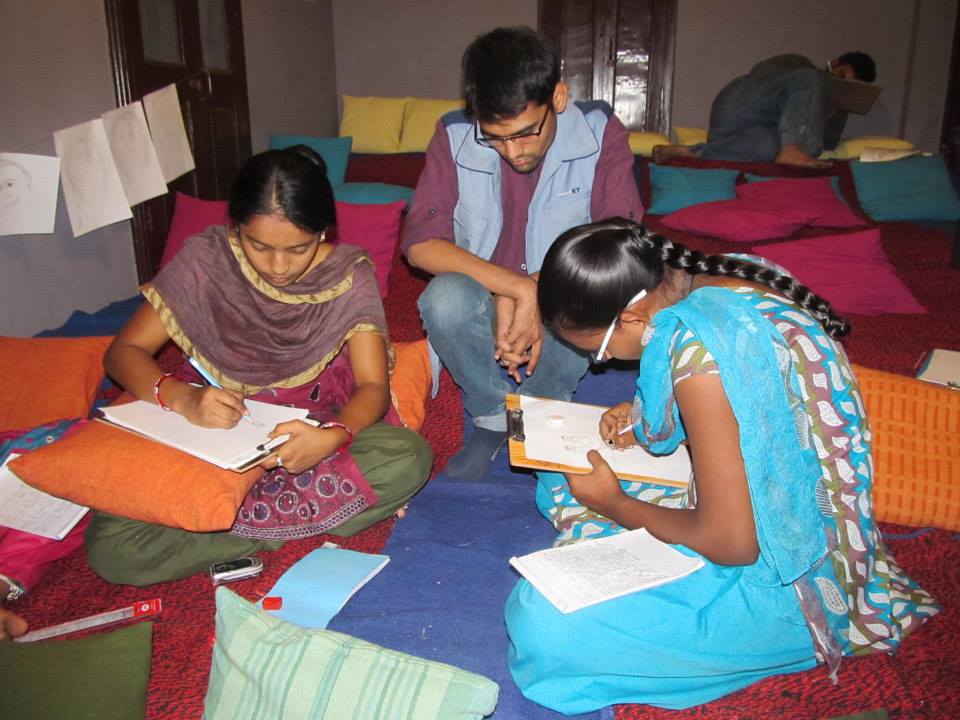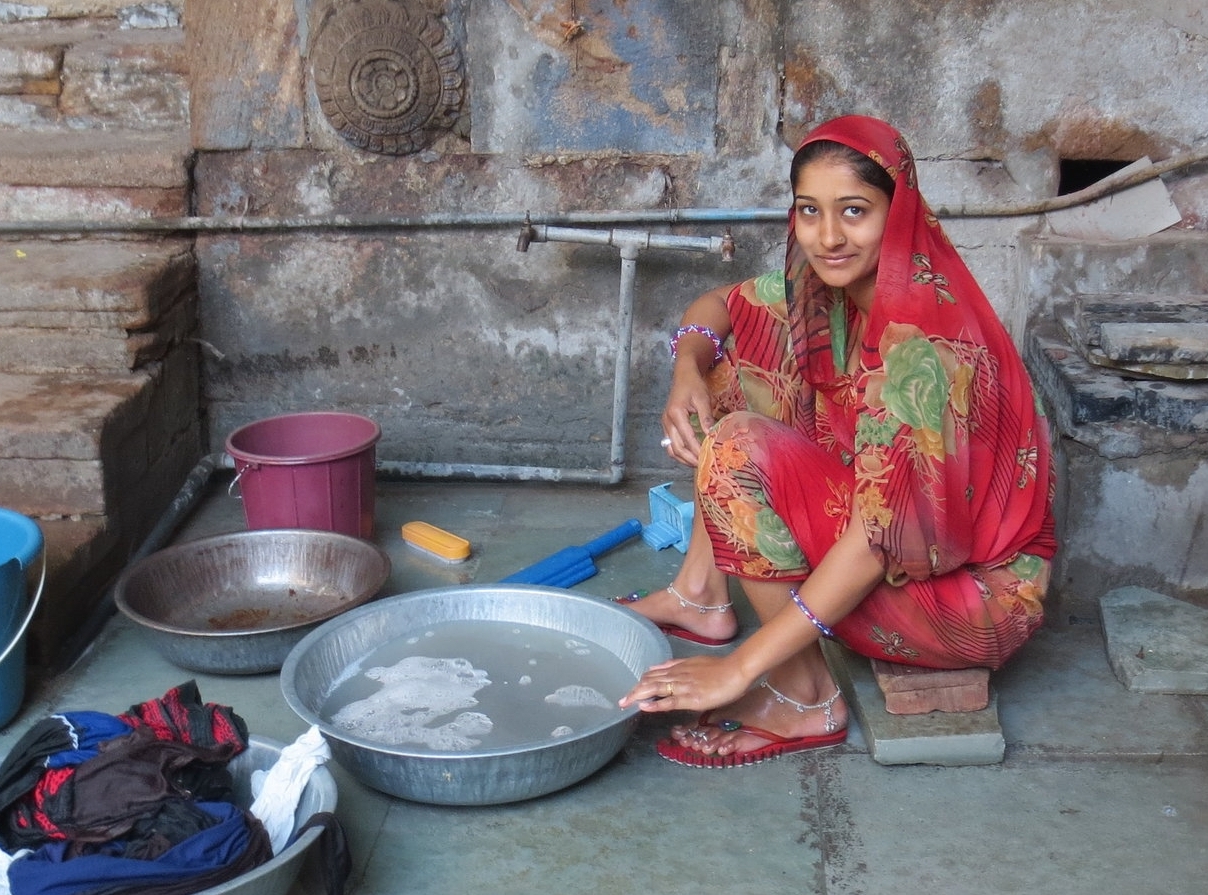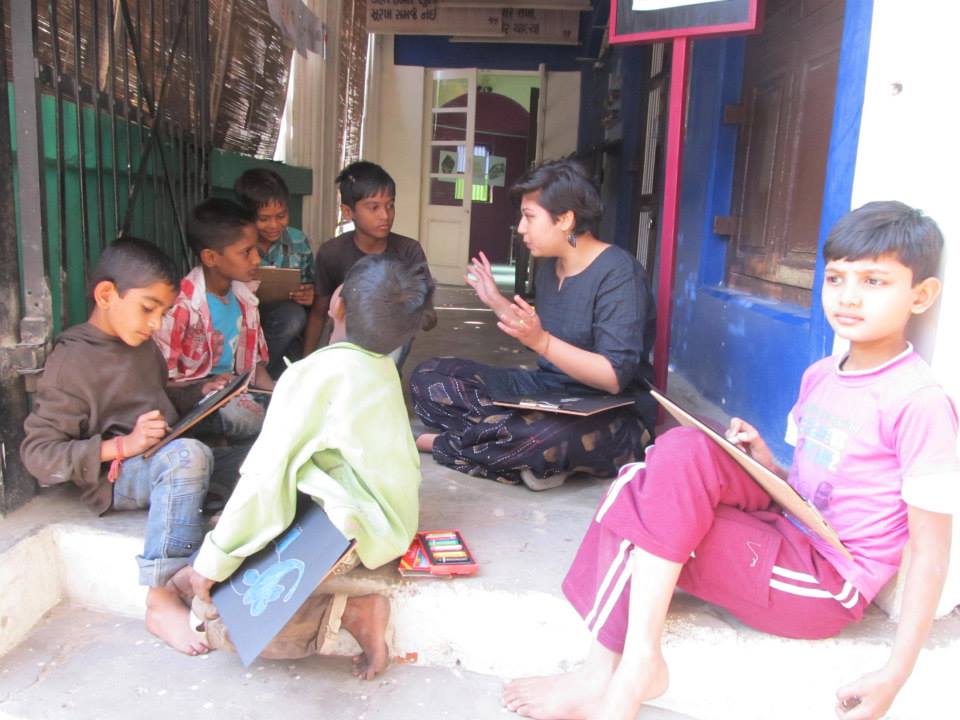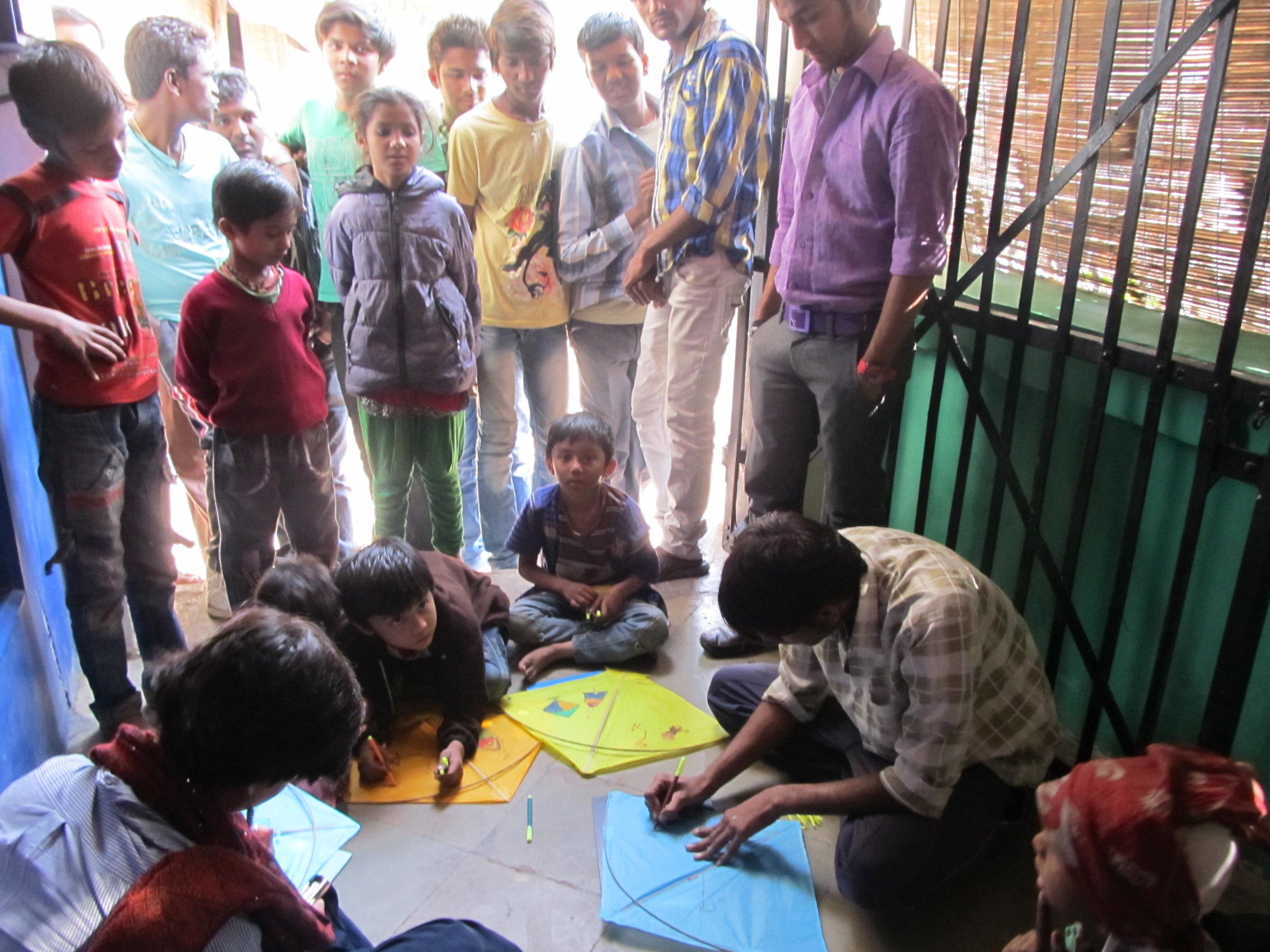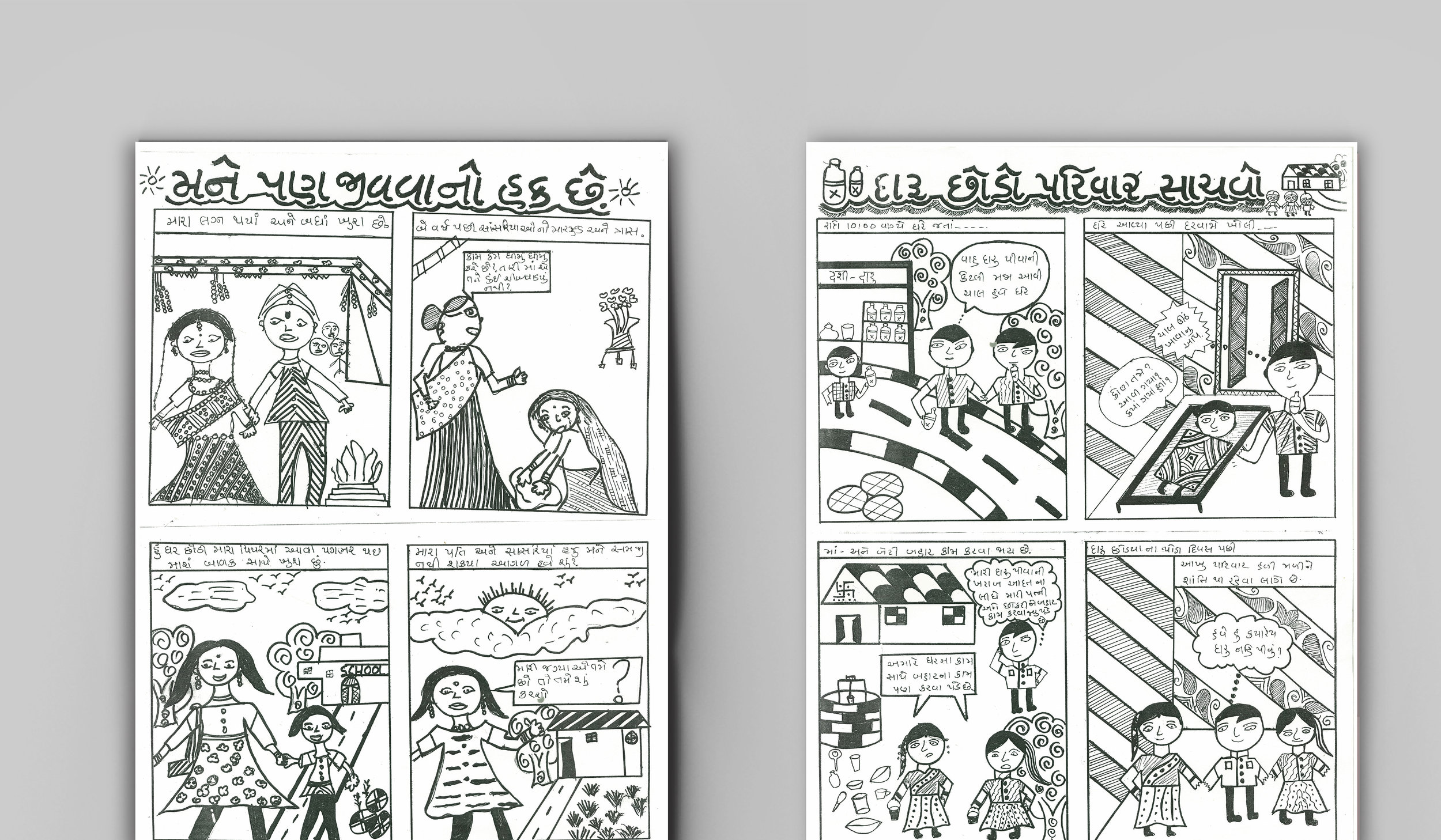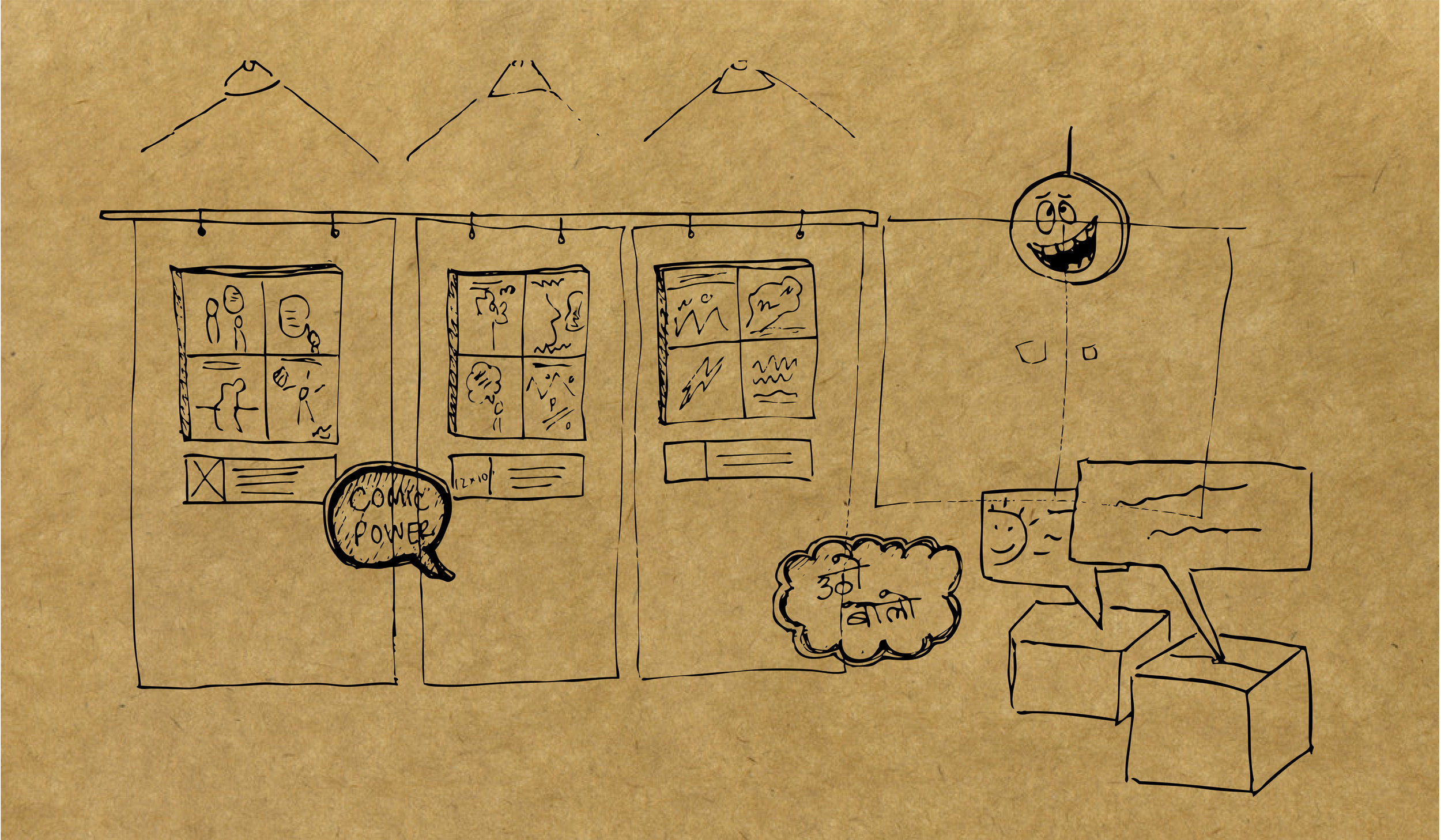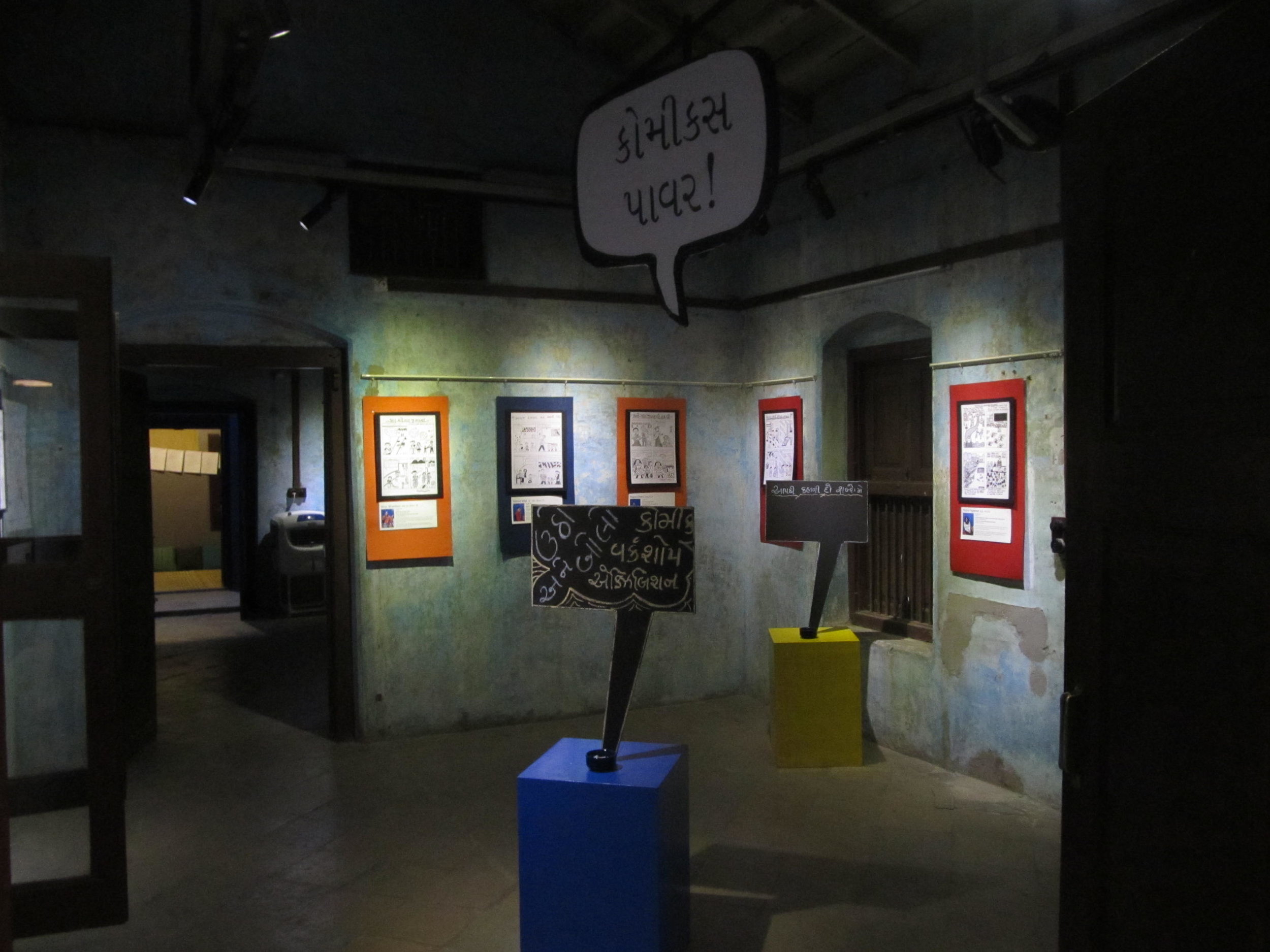How might we design a more inclusive and transparent museum
that creates dialogue with the community?
The Conflictorium, a museum about conflict & peace, based in Ahmedabad, India was a year-old museum that struggled with implementing its vision of creating dialogue with community through the arts. I was brought in as a consultant to train museum staff in design thinking processes. In the early stages it became evident that the museum's biggest roadblock was that it was still perceived as a stranger within the neighborhoods it was aiming to engage. I began by working with staff and partner non-profits to move the museum towards a more inclusive space that was accessible to individuals from marginalized, low-income, communities who had never stepped into a museum before.
Challenges included working with: (1) low-literacy populations, (2) shoestring budgets, and (3) without a design brief.
Outcomes included the development of an arts outreach program for neighborhood children, a 4-day grassroots comic making workshop, and bi-lingual exhibition I designed to showcase the comics created & invite residents into the museum.
Partners: Conflictorium, Museum of Conflcit
Role: designer, researcher, consultant working with museum staff
Extent of the project: three months a year, for three years
Recognition: Times of India Newspaper, The Ahmedabad Blog, AnimationXpress.com
Tags: design thinking, strategy, ethnography, program management, exhibition design, workshop facilitation, multi-lingual communication, organizational transformation
Design Process.
I spent my time being a sponge in the beginning of this project, checking my assumptions and understanding the context. The beginning of this project was messy and it became clearer as time went on.
Research.
Working with partner organizations, we mapped the communities surrounding the museum using visual ethnography and interview methods.
To address the biggest challenge the museum faced, and as a hands-on way of training staff in design research methods, we partnered with social justice organizations to document the neighborhoods—mapping the varying communities, collecting resident stories, and gaining a different perspective of the museum.
A hand drawn map of the neighborhoods surrounding the museum with the varying communities that reside in them. Quotes remembered by museum staff from interviews with neighborhood residents.
Prototyping.
Acting on insights from our research within the communities we created an arts outreach program that brought children & their parents into the museum.
Our research uncovered that children loitered in the streets while mothers worked. To engage these children and build trust, we created a weekly art program where I taught various art techniques on environmental & social issues relevant to the neighborhood. Classes were held in the entrance stoop of the museum for transparency.
Example of an activity I facilitated with museum staff while developing the arts outreach program.
Newly developed Conflictorium Arts Outreach Program objectives.
1. Building trust and engagement with surrounding communities through arts activities, programs, and workshops.
2. Providing access to the visual and performing arts to children and youth from underprivilaged backgrounds.
3. Raising awarness of social and environmental issues affecting the community through arts curriculum.
Design.
Inspired by a grassroots comic workshop attended by a museum staff member, we developed a four-day comics making workshop & designed an exhibit of the work.
The success of the weekly art program inspired confidence in the museum staff, and one member came up with an idea of hosting a comic making workshop targeted at neighborhood youth. We modified Sharad Sharma's grassroots comic workshop and developed the "Stand Up, Speak Up! Comics Workshop" and exhibition.
Quotes from participants in the workshop:
"I was very apprehensive about coming here. Then, I realized it’s not so difficult. I could express myself! The entire day I felt relaxed and rid of the thoughts going on in my head."
—Bharti, participant (translated from Gujarati)"While making this comic, I felt that everyone should write about various instances in their life and share it with others. Through which others will be able to know about those stories, and be inspired to share their own."
—Nikita, participant (translated from Gujarati)
Two examples of the final comics created by participants. Each author told a story about a time in their life when they were or were not able to stand up for themselves.
The comics produced narrated stories of the hardships faced by their creators. Stories of domestic violence, alcohol abuse, child marriage, and more were illustrated. To bring these powerful stories to the forefront, and to enage staff in the full design process, I proposed exhibiting the work in the museum.
Quote from media coverage of the exhibit:
“The core highlights of the exhibition are the personal stories of the participants that have emerged during the workshops.”
—AnimationXpress.com



